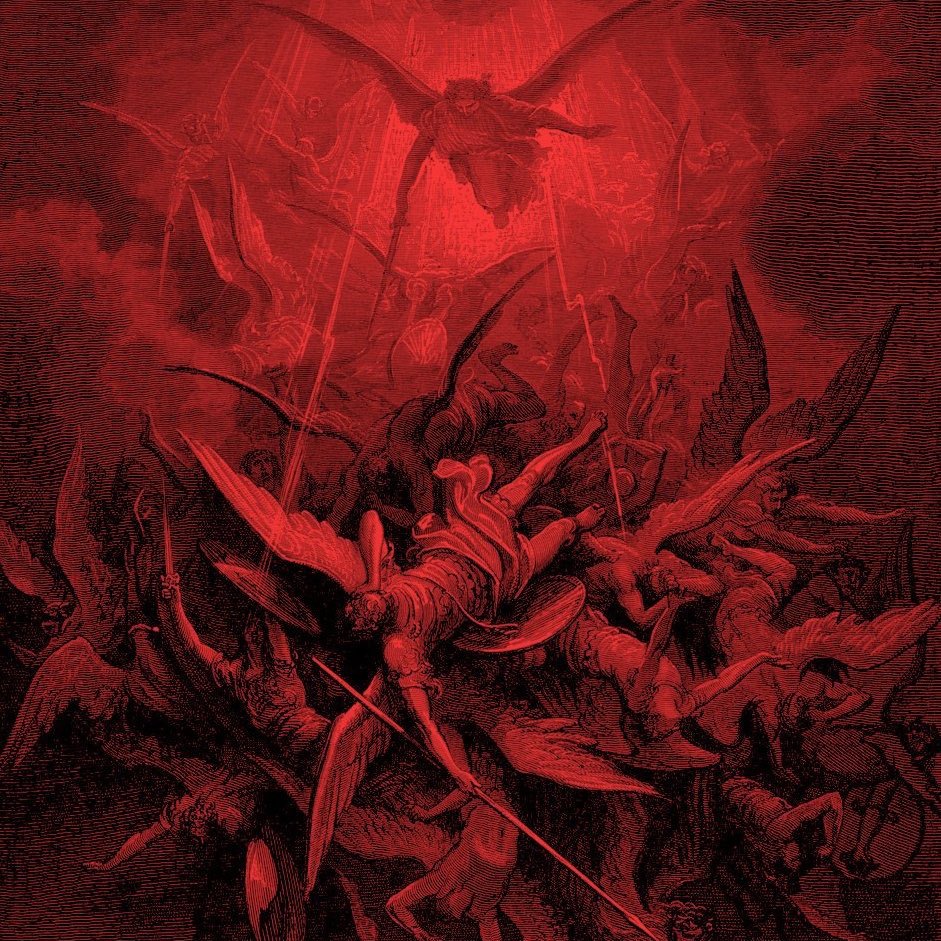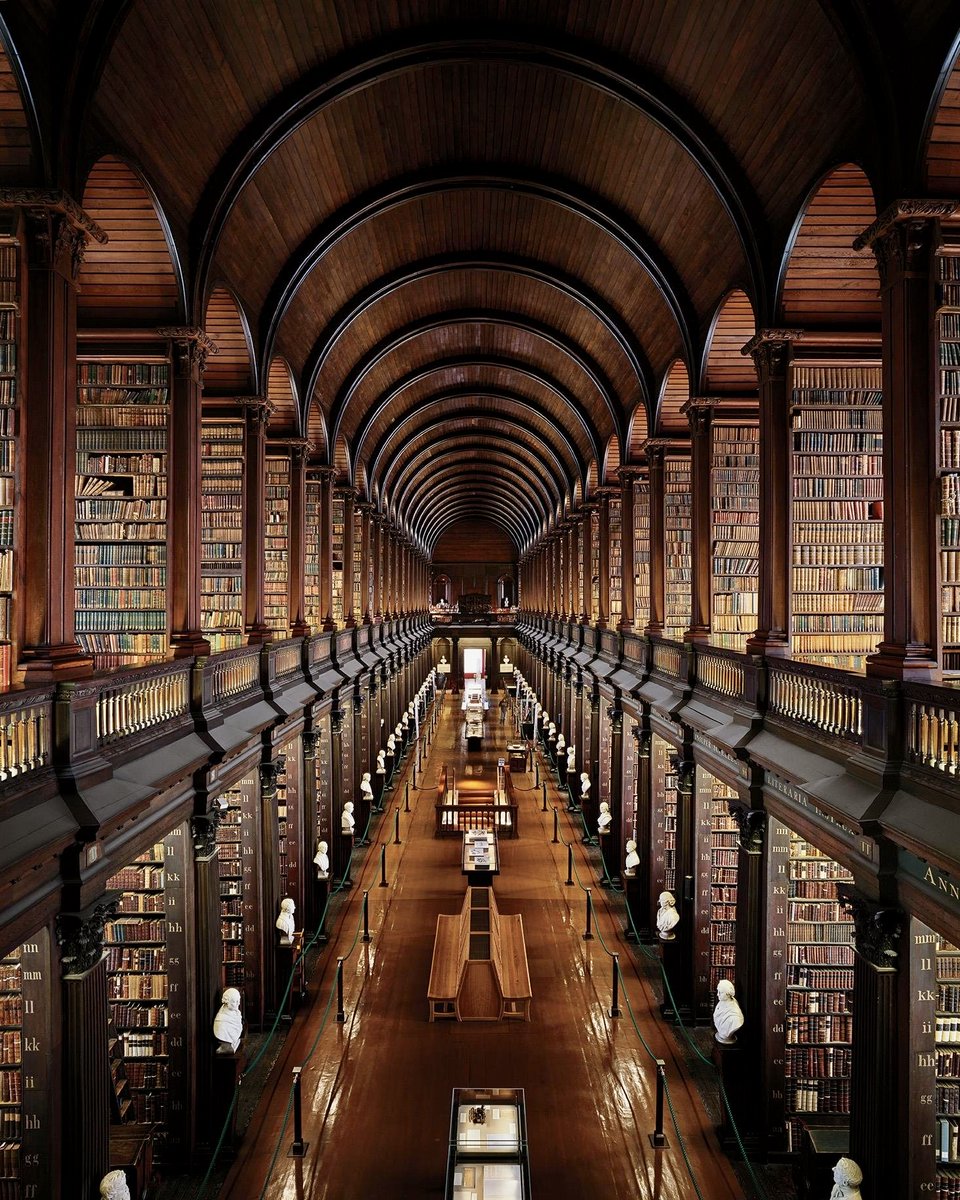What exactly does evil look like?
Well, nothing captured Satan's hatred like John Milton's Paradise Lost.
One sentence distilled the true nature of evil like no other in history… (thread) 🧵
Well, nothing captured Satan's hatred like John Milton's Paradise Lost.
One sentence distilled the true nature of evil like no other in history… (thread) 🧵

Paradise Lost tells the story of Satan's origins: the greatest of the angels who rebelled against God's rule.
After losing a war in Heaven, Satan was cast out — with a battle cry that reverberates through the ages...
After losing a war in Heaven, Satan was cast out — with a battle cry that reverberates through the ages...

"Better to reign in Hell than to serve in Heaven!"
Rather than being a prisoner of Hell, Milton casts Satan as its ruler. And his famous line explains a lot about the nature of evil...
Rather than being a prisoner of Hell, Milton casts Satan as its ruler. And his famous line explains a lot about the nature of evil...

Milton's Satan is more than a rebel — he's an antihero, unable to save himself from his faults.
Seeing Satan's perspective, we're tempted to side with him: why should an all-powerful God dictate his will to everyone?
Seeing Satan's perspective, we're tempted to side with him: why should an all-powerful God dictate his will to everyone?

Shouldn't a daring visionary be allowed to try things his own way?
And wouldn't it be better to have things your own way in Hell, than put up with smug goodness in Heaven?
And wouldn't it be better to have things your own way in Hell, than put up with smug goodness in Heaven?

But these questions miss the real point: Satan's original sin wasn't mere rebellion — it was pride.
He had grown enamored of his own beauty and sought to be worshiped...
He had grown enamored of his own beauty and sought to be worshiped...

As the epic continues, Satan seeks to undermine God's creation by tempting Man to sin.
In the form of a serpent, he slithers into the Garden of Eden and deceives Eve into eating the forbidden fruit.
In the form of a serpent, he slithers into the Garden of Eden and deceives Eve into eating the forbidden fruit.

But, in the Garden, a less famous but equally important line is uttered by Satan:
"Nor hope to be my self less miserable
By what I seek, but others to make such"
As I"
"Nor hope to be my self less miserable
By what I seek, but others to make such"
As I"

In a moment of honesty, Satan admits his rebellion is hollow.
He cannot achieve anything good through it, nor escape his inner torment — he can only drag others into his misery.
He cannot achieve anything good through it, nor escape his inner torment — he can only drag others into his misery.

And what was the result of all his bravado?
A once powerful archangel staging a celestial coup is now just a pitiful snake slithering off to Hell...
A once powerful archangel staging a celestial coup is now just a pitiful snake slithering off to Hell...

Pride caused his fall, and for all his bold words, he's master only of his own destruction.
Meanwhile, God still rules, and it's the beauty of his creation that begins to draw the reader's interest.
Meanwhile, God still rules, and it's the beauty of his creation that begins to draw the reader's interest.

The root of Satan's evil — and mankind's sin — was his pride.
Living by your own rules, embracing pride, is the route to evil. Following God in humility is the route to good.
You can reign in Hell or serve in Heaven.
Living by your own rules, embracing pride, is the route to evil. Following God in humility is the route to good.
You can reign in Hell or serve in Heaven.

But Milton ultimately reminds us: regardless of how attractive rebellion might seem, there are never any winners in Hell.
And there are certainly no rulers...
And there are certainly no rulers...

If threads like this interest you, I go deeper in my FREE newsletter — do NOT miss tomorrow!
84,000+ people read it: art, history and culture 👇
culture-critic.com/welcome
84,000+ people read it: art, history and culture 👇
culture-critic.com/welcome
• • •
Missing some Tweet in this thread? You can try to
force a refresh

























